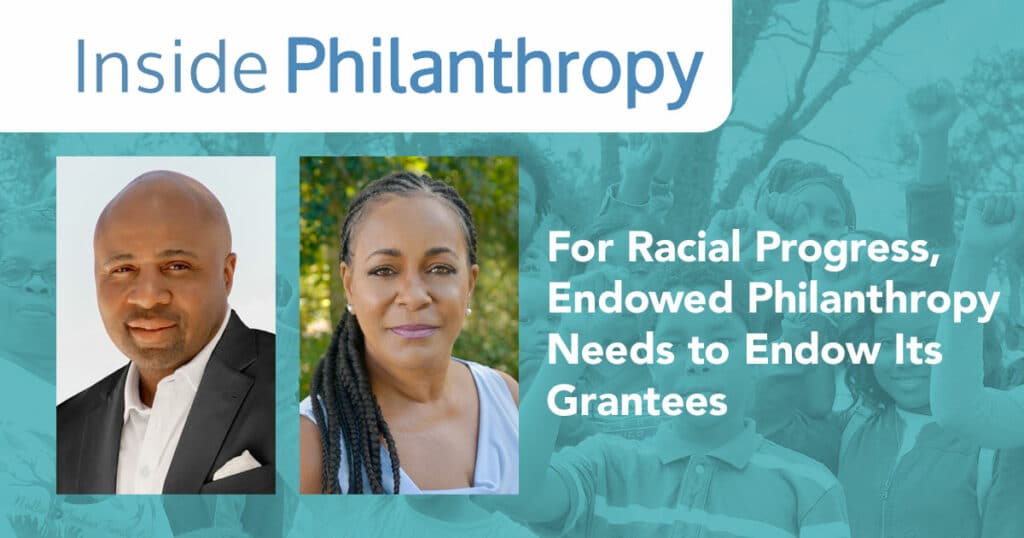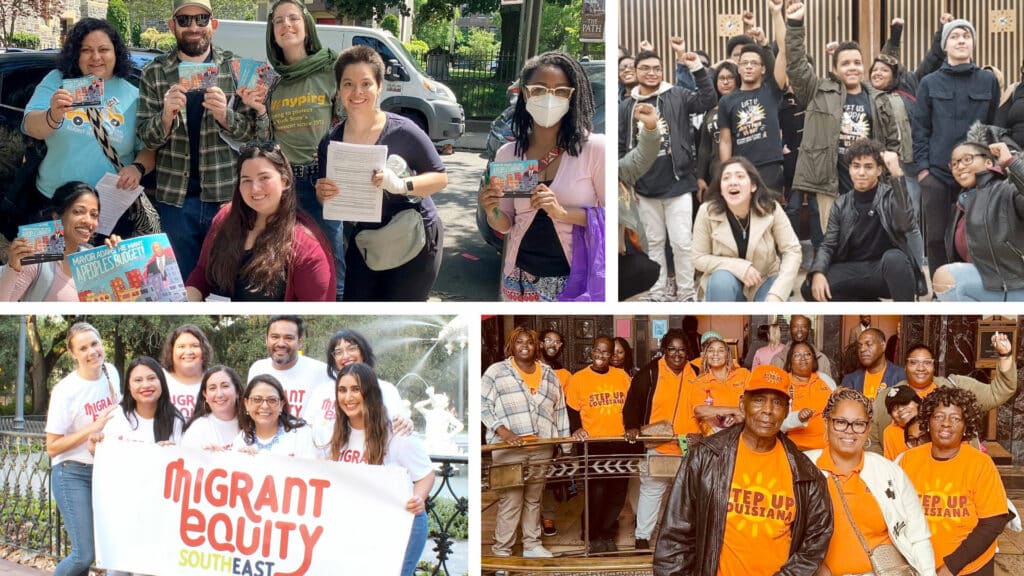News
For Racial Progress, Endowed Philanthropy Needs to Endow Its Grantees

The following op-ed was published in Inside Philanthropy on February 1, 2024.
By Dr. John H. Jackson, Schott Foundation President & CEO and Susan Taylor Batten, President & CEO of ABFE
Last November, school board candidates supporting honest and antiracist public education won the majority of elections across the country. This marked a watershed and encouraging moment for inclusive and comprehensive public education. It was an election proof of the power of grassroots movement building.
For decades, organizers and leaders of color have been showing up at school board meetings. Participating in parent advisory groups. Organizing at state capitals. Registering voters. These activist students and parents are sustaining the fiber of our democracy and protecting our constitutional rights.
Yet, as we found in our recent research with Candid, BIPOC-led organizations remain grossly underfunded, despite philanthropy’s stated commitments and interest in advancing racial justice. As the Schott Foundation will detail in a soon-to-be-released update of the #JusticeIsTheFoundation data project, the data still only shows 14% of all K-12 philanthropic dollars were invested in racial equity and justice in education between 2019 and 2021.
Endowments are a long-term investment approach to change that. Grantees have told us what endowments could mean to them: a stable financial state, no longer dependent on the whims of philanthropy, and the freedom to plan for the long term. We endow museums, universities and hospitals, but we do not endow the infrastructure needed to keep our democracy working and advance racial justice, i.e., the grantees doing the work. It’s time to ask why that is, and what it would look like if that status quo were to change.
Endowments as a pathway to racial justice
If any sector knows the power of endowments, it is the philanthropic sector. Most of our institutions have endowments; each year, most foundations draw down a mere 5% of those endowments and invest just a portion of that with the grantee partners who are actually doing the work to build transformative systems.
Why do we do this? Because most foundations prioritize maintaining and growing their endowments. And most trustees view their fiduciary responsibility as being primarily connected to ensuring the longevity of the foundation or those resources. But this model, juxtaposed against the reality of the racial justice outcomes we want to see, makes little sense.
This resourcing style comes from a private style of charity rather than a public play for social impact. Its genesis came over a century ago, when wealthy men believed their primary goal was to amass wealth in any way possible and decided to offset a portion of the public damage done to humanity with charity. However, their overarching goal was always to maintain and grow their private wealth as a part of maintaining a legacy to pass to their children and generations to come.
The issue here also goes beyond funding individual organizations, and to the heart of how we “solve” our racial justice problem. If we accept the premise that these racial justice organizations (as evidenced by the recent elections and decades of advances), are the pathway to the deep changes we need, then why wouldn’t we transfer more than just grants to them — but, rather, the true wealth they need to stabilize their work and achieve the transformative racial progress we want to experience?
Say, hypothetically, there were parts of our racial justice problem that we only needed 10 years to solve. That would call for a resourcing strategy in which we invest sums much larger than 5% in racial justice organizations. In this case, philanthropy would invest sums large enough to exponentially accelerate their capacity, momentum and impact to the degree that by the end of the 10th year, significant progress would be achieved. But as a sector, we typically don’t do that.
On the other hand, if we believe that our racial justice partners were in for a long battle, let’s say 20 to 30 years, then that would dictate a strategy in which we move to consistently provide long-term operating commitments to organizations.
But as a sector, we don’t do that either — we provide limited, short-term funding for a long-term battle. And then, too often, philanthropic boards bemoan racial justice organizations’ “lack of short-term progress.”
The fact is, building a highly functioning multiracial democracy will take substantially more than 10 years; as such, it means moving even larger chunks of money for long-term reserves to position organizations on stable ground and maintain their capacity to fight the battle consistently and effectively for the two or three decades ahead of us.
But regardless of which scenario you choose, none calls for a resourcing strategy that provides funding at a mercurial and slow-drip pace. Funding organizations in this way does not support them if we want them to win.
We have to change. Our institutions have to change. Some of our philanthropies are doing things that they believe are delivering freedom and justice, but they’re actually just making the back of the bus more comfortable. They believe they are delivering safety and justice while community partners still feel as if the pain falls on them alone.
Shifting the philanthropic sector to endow our racial justice grantees means moving into uncharted territory: There is no map, no risk-free path to take. But our grantees are taking risks every day. Let us take inspiration and courage from them, and let us as grantmakers chart our course together, sharing discoveries and insights as we go. We look forward to working alongside you.
John H. Jackson is president and CEO of the Schott Foundation for Public Education.
Susan Taylor Batten is president and CEO of ABFE: A Philanthropic Partnership for Black Communities.



